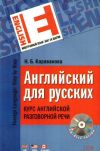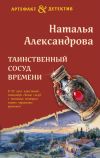
Автор книги: Елена Глушенкова
Жанр: Иностранные языки, Наука и Образование
сообщить о неприемлемом содержимом
Текущая страница: 5 (всего у книги 31 страниц) [доступный отрывок для чтения: 9 страниц]
Revision I
TEXT 1
Переведите текст со словарем.
Mixed Economy
There are three types of management in economies. An economy maybe almost totally planned, as it was in the Soviet Union. An economy may be almost totally unplanned, as it is in the USA Or an economy may be a combination of planning and freedom of operat ion. Examples of the latter are Japan and South Korea
In a planned economy the government decides what goods are to be produced and how they are to be marketed. Governments set all the priorities, and the producers are to follow the directions given to them.
In a partially planned economy such as Japan's, the government often encourages industry and helps it with subsidies. Government also makes investments and regulates trade.
The United States is an example of an unplanned economy. But it has a lot of government intervention in economic activity. As the economy of the United States grew, and as government and its importance increased, the government policy at every level acquired greater importance for the economy.
But the economy of the United States may be called unplanned because the government does not regulate what will be produced and how it will be marketed. These decisions are left to the producers. Even the great amount of government regulation that has emerged since the Great Depression has not turned the economy of the United States into a planned economy.
The name of the American economic system is capitalism. Another name for it is the free market economy.
TEXT 2
Прочитайте текст и ответьте на следующие за ним вопросы.
Technology and Supply
An improvement in technology will increase the supply as producers will want to supply a larger quantity than before at each price. An improvement in cocoa refining makes it possible to produce more chocolate. So do improvements in packaging techniques. Faster transportation and better refrigeration may lead to less spoiled cocoa beans. Each of these technological advances allows firms to supply more.
Technology must be understood very broadly. It includes all know-how about production methods, not only the state of available machinery. In agriculture, the development of disease-resistant seeds is a technological advance. Improved weather forecasting may lead to better timing of planting and harvesting. A technological advance is any idea that allows more output from the same inputs as before.
1. What is included in technology?
2. What is a technological advance?
3. What technological advances may increase the supply of chocolate?
4. What technological advances in agriculture can you name?
TEXT 3
а) Прочитайте текст и озаглавьте его.
A change in demand takes place when one of the factors assumed constant changes.
An increase in income results in a rise of the quantity demanded, provided the goods are normal.
A change in the price of one good has an income effect and a substitution effect. The income effect of a price increase is to reduce the quantity demanded of all normal goods. For inferior goods, the income effect works in the opposite direction. The substitution effect leads consumers to buy less of the goods whose price has increased.
The substitution effect of a price rise will also reduce the demand for the goods that are complementary to the goods whose price has risen.
In practice, there are three types of relationships between goods: the goods may be substitutes, complements, or independent. The definition of the three types of relationships is based on the substitution effect of the price change of a good.
(1) The substitution effect is positive for substitute goods, the price of the good (J) and the quantity of the good (?) move in the same direction. If the price of j increases, consumers tend to substitute? for /'. If the price of j decreases, then consumers tend to substitute the relatively cheaper j for L In both cases, there is a positive relationship between the price of j and the quantity of?', An example is butter and margarine.
(2) The substitution effect is negative for complementary goods such as buns and hot dogs. In this case, the price of hot dogs (j) and the quantity of buns (?) move in opposite directions. An increase in the price of j (hot dogs) means that the quantity demanded ofj decreases and the quantity of the complementary good i (buns) also decreases. The same happens when the price of j decreases. In both cases there is a negative relationship between the price of j and the quantity of I,
Notice that if the goods change places in the equation, it may result in a different coefficient. Let us consider the consumption of sugar and coffee. A change in the price of coffee may have some influence on the use of sugar, but a change in the price of sugar probably will have very little influence on the use of coffee.
(3) The substitution effect is zero for independent goods. Independence means that no substitution or complementary relationship exists between the two goods.
б) Расположите вопросы в таком порядке, чтобы они могли служить планом текста. Ответьте на эти вопросы.
1. Do all complementary goods affect each other's use to the same extent?
2. What examples of complementary goods are given in the text?
3. What goods are called independent?
4. How many types of relationship between goods can you name?
5. How does the substitution effect work with complementary goods?
6. How does the substitution effect work with substitute goods?
в) Перескажите текст.
TEXT 4
а) Прочитайте текст и ответьте на следующие за ним вопросы.
Price Ceilings and Price Supports
During national emergencies (чрезвычайные обстоятельства), the government sometimes imposes limits on prices, not allowing them to reach their equilibrium level. For example, during World War II, the governments did not allow the prices of foodstuffs to rise to their equilibrium levels, as they felt that it would be unfair (несправедливый) and highly unpopular. As a result, the quantity demanded exceeded the quantity supplied. In other words, there was shortage.
As the price system is not allowed to do the rationing (нормирование продуктов), some formal system of rationing or allocating the available supply of the product may be needed. Thus, in World War II, families received ration coupons which determined how much they could buy of every commodity. And in 1979, when the Organization of Petroleum Exporting Countries cut back oil production and reduced exports of oil to the United States, there was serious talk there that gasoline and oil might be rationed. Such rationing schemes may work well in emergencies (over short periods of time), but they can result eventually in serious problems, as prices are not allowed to regulate production and consumption.
Consider, for example, the rent ceilings that have been imposed on some apartments in New York City. First, the purpose of these ceilings was to prevent (предотвращать) rents from rocketing up during World War II. It has resulted in a shortage of housing in New York City. Because they have pushed the price of housing below the equilibrium price, less housing has been supplied than has been demanded. The lower price of housing has kept investors from building new housing, and has made it unprofitable for some owners of housing to maintain their buildings. It is socially desirable to allocate more resources to New York housing, but the rent ceilings have prevented this.
Governments may also impose price floors – or price supports, as they are often called. The assumption is that they allow producers of the good in question to maintain their revenues at a higher level. For example, the federal government has imposed price supports on a lot of agricultural commodities that might increase farm incomes. The result is that the quantity supplied exceeds the quantity demanded at the floor price. Thus, there is a surplus of the commodity – and, in case of (в случае) agricultural commodities the government has to buy up and store these surpluses.
1. When do governments usually impose limits on prices?
2. What examples of government regulations of prices are given in the textl What were their results?
3. Is government regulation of prices desirable?
б) Подумайте и скажите:
1. What other examples of government rationing of foodstuffs and other goods do you know? What were the reasons for it?
2. Are there any price limits in Russia at present? If there are any, give examples.
Unit 5
Factors of Production: Capital and Labour
Грамматика и лексика :
1. Инфинитив в функции подлежащего, обстоятельств цели и Следствия
2. Оборот «for + существительное + инфинитив»
3. Значения слова one (повторение)
4. Значения слова it (повторение)
Задание на дом № 1
1. В разделе «Грамматика и словообразование» проработайте § 13,14,15, 18 и 19.
2. Переведите, не пользуясь словарем, следующие группы однокоренных слов, опираясь на значение одного из них. Обратите внимание на отрицательные приставки.
а) efficient (эффективный): inefficient, efficiently, inefficiently, efficiency, inefficiency;
б) to employ (нанимать, предоставлять работу): employed, employment, unemployed, unemployment
3. Переведите предложения на русский язык, обращая внимание на инфинитив.
а) 1. То run a business is to plan its activities and to determine all operations necessary at each step.
2. To control an economy is the same as to intervene in it.
3. To develop new information technologies is of prime importance for those countries that wish to lead in the world economy.
4. To stay in the tobacco market is not an easy task for Russian manufacturers.
5. To use food stamps (карточки, талоны) was common practice in many countries in wartime.
б) 1. In order to consume, we need income.
2. In order to earn income, we have to work.
3. Firms and individuals spend their income to consume and to invest.
4. To analyze the labour market, an economist should first explain how people allocate their time to production.
5. With an increase in the price of one factor of production, to produce a given output the firm starts using a technology economizing on the factor whose price has risen.
6. To calculate profit-maximizing output and the corresponding quantities of the factors demanded, we have to calculate the total cost for all output levels.
в) 1. As a rule, resources in industrialized countries are used effectively enough to make a solid basis for economic growth.
2. The imports tariffs were not raised high enough to decrease imports.
3. Statistics depends too much on limited information resources to avoid (избегать) compromises.
4. The economic growth is too slow now to expect a rapid increase in demand and supply.
5. In developing countries, labour efficiency is too low in agriculture to hope for an increase in food supply in the near future.
4. Переведите предложения на русский язык, обращая внимание на оборот for + существительное + инфинитив.
1. The free market is one way for society to solve the economic problems as to what, how and for whom to produce.
2. Economically advanced countries' aid to the Third World is not generally strong enough for the latter to achieve economic independence.
3. For research and development to be carried out, the governments in less developed countries have to invest enough resources in their own research institutes.
4. For higher profit to be obtained, firms have to increase efficiency of labour.
5. Unemployment is growing too rapidly for labour markets to be in equilibrium.
5. Переведите текст Factors of Production: Capital and Labour и отработайте его чтение.
6. Найдите в тексте:
1) инфинитив в качестве подлежащего;
2) инфинитив в качестве обстоятельства цели;
3) оборот for + существительное + инфинитив;
4) предложения, где слово it не переводится;
5) предложения, в которых слово one не переводится.
TEXT
Factors of Production: Capital and Labour
Factors of production are resources used by firms as inputs for a good or service to be produced. Factors of production are as follows: capital, labour, and natural resources.
In economic theory, the term «capital» refers to goods and money used to produce more goods and money. Classifications of capital vary with the purpose of the classification. The most general distinction is the one made between physical, financial, and human capital.
Physical capital is land, buildings, equipment, raw materials. Bonds, stocks, available bank balances are included in the financial capital. They both make a great contribution to production.
To group capital into fixed capital and circulating capital is common practice[8]8
is common practice – зд. общепринято.
[Закрыть]. The former refers to means of production such as land, buildings, machinery and various equipment. They are durable, that is, they participate in the production process over several years. Circulating capital includes both non-renewable goods, such as raw materials and fuel, and the funds required to pay wages and other claims against[9]9
claims against – требования; претензии на что-либо, права на что-либо.
[Закрыть] the enterprise. Non-renewable goods are used up in one production cycle and their value is fully transferred to the final product.
Human capital is knowledge that contributes «know-how» to production. It is increased by research and disseminated through education. Investment in human capital results in new, technically improved, products and production processes which improve economic efficiency. Like physical capital, human capital is important enough to be an indicator of economic development of a nation.
It is common, in economics, to understand labour as an effort needed to satisfy human needs. It is one of the three leading elements of production. Labour has a variety of functions: production of raw materials, manufacturing of final products, transferring things from one place to another, management of production, and services like the ones rendered by physicians and teachers.
One can classify labour into productive and unproductive. The former produces physical objects having utility. The latter is useful but does not produce material wealth. Labour of the musician is an example.
Unlike other factors of production, for example capital, when workers are employed, their efficiency can vary greatly with organization of work and their motivation.
Demand for labour is influenced by the demand for goods produced by workers, the proportion of wages in total production costs, etc. The supply of labour depends upon the size of population, geographic mobility, skills, education level (human capital), etc. Workers supply labour either individually or through trade unions. If demand for and supply of labour are not in equilibrium, there is unemployment. The rate of unemployment is a percentage of the total labour force without a job. It is desirable for an economy to have the lowest possible unemployment rate and to achieve higher employment as neither full use of resources nor maximum level of output can be achieved in an economy having unemployment.
Factors of production are combined together in different proportions in order to produce output. It is assumed in economics that one should choose the combination of factors which minimizes the cost of production and increases profits.
The third factor of production, natural resources, poses too many economic problems[10]10
to pose problems – ставить проблемы.
[Закрыть] to be discussed here. We will analyze them in the following unit.
Запомните!
It is important…. Важно….
It is common practice…. Общепринято….
It seems / appears that… Кажется, что….
It is news to us. Это для нас новость.
both оба
both… and… и… и; как… так и…
either… or… или…или, либо…либо…
neither… nor… ни… ни…
Словарный минимум к тексту
as follows как следует ниже; следующий
following adj следующий; нижеперечисленный, нижеследующий
capital n капитал
physical capital – физический капитал (фактор производства, обычно представленный машинами, оборудованием и производственными зданиями)
financial capital – финансовый капитал (фактор производства, обычно представленный деньгами)
human capital – человеческий капитал (умение и мастерство, общее или специальное, приобретенные человеком в ходе профессиональной подготовки и производственного опыта)
fixed capital – основные средства(капитал, вложенный в основные фонды предприятия, т. е. землю и здания, производственные сооружения, машины и оборудование, инвестиции в компании-филиалы)
circulating capital – оборотный капитал(часть капитала компании или другой организации, которая– задействована в ее торговой деятельности)
labour – труд
labour force – рабочая сила;piтрудовые ресурсы; самодеятельное население; число работающих(напр. на предприятии)
natural adj естественный, природный
natural resources – природные ресурсы
nature – природа
to vary with – различаться в зависимости от; зависеть от
to vary from… to… – изменяться, колебаться(в пределах, от… до…)
variety – разнообразие
a variety of (factors) – ряд, множество (факторов)
various adj различный, разный; разнообразный
purpose n цель, намерение
for this purpose – с этой целью
equipment – оборудование
raw material(s) – сырье
raw adj сырой, необработанный
available adj наличный, имеющийся в наличии; (to smb) доступный(кому-л.)
availability – наличие
contribution – (to smth) вклад(во что-л.)
to make a contribution to science – сделать вклад (внести свою лепту) в науку
contribute – v (to smth) делать вклад(во что-л.), содействовать, способствовать(чему-л.)
means of production – средства производства
machinery – машины; оборудование
durable adj длительного пользования
durable goods – товары длительного (долговременного) пользования
durables – товары длительного пользования
production process – производственный процесс
fuel – топливо, горючее
require – v (smth) нуждаться (в чем-то), требовать(чего-л.)
required – adj необходимый
requirement – требование; нужда, потребность
to meet the requirements удовлетворять потребности; отвечать требованиям
wage(s) часто pi заработная плата
enterprise промышленное предприятие; завод, фабрика
non-renewable adj невозобновляемый
non-renewable resources невозобновляемые, истощимые ресурсы
ant renewable adj возобновляемый
to use up – израсходовать, использовать (полностью); истощить
production cycle – производственный цикл
value – стоимость(в денежном выражении)', ценность
transfer v переносить, перемещать; переводить(деньги), перечислять(суммы)', перевозить
final product – конечный продукт
investment и (in smth) – капиталовложение, помещение капитала, денег, инвестирование; инвестиция, вклад(вочто-л.)
invest v (in smth) помещать, вкладывать деньги, капитал (вочто-л.)
efficiency n эффективность; производительность; продуктивность
efficiency of labour – производительность труда
ant inefficiency и неэффективность
efficient adj эффективный, действенный; целесообразный
ant inefficient adj неэффективный, малопроизводительный
like грам. знач. предлога – подобно, как
unlike adj в грам. знач. предлога — в отличие от
manufacture v производить; изготовлять
manufacturing n производство
manufacturer n изготовитель; производитель; поставщик
management n управление
manage v руководить, управлять
manager n управляющий, руководитель; директор
employ v предоставлять работу; нанимать; использовать
employed adj имеющий работу (службу) (небезработный)
employed workers – занятые рабочие (небезработные)
employment n работа (понайму), занятость (рабочей силы)
full employment – полная занятость, отсутствие безработицы
unemployed adj безработный
unemployment n безработица
unemployment rate (ж. rate of unemployment) – уровень безработицы
production costs (тж. costs of production) – издержки производства
production cost (тж. cost of production) – себестоимость
cost n стоимость; pl расходы, издержки
cost v стоить, иметь стоимость
size n размер(ы), величина; объем
population n население
trade union – профсоюз
job n работа, место работы
Аудиторная работа № 1
7. Переведите предложения на русский язык, обращая внимание на значения слова it. Укажите номера предложений, в которых it не переводится.
1. In principle, it is possible, but in practice, it is very inefficient to control the output of cars changing the incomes of potential buyers and manipulating transport costs. It is easier to control the output of cars controlling the availability of raw materials, for example steel, to manufacturers.
2. Firms can either save (копить, накапливать) their income or pay it out to their owners.
3. It is common practice to include all the more or less durable means of production, such as land, buildings and machinery in fixed capital.
4. Early economists such as Adam Smith and David Ricardo said that the value of product depended upon the amount of labour needed to produce it.
5. In comparing national incomes (in total and per person) it is not important which members of the population earn this income, in analyzing incomes within a country, it is important.
8. Переведите на русский язык следующие предложения, обращая внимание на значения слова one.
1. One thing in which workers are different is human capital.
2. Many people who do not get a new job after quitting (оставлять) the old one often leave the labour force to return to school, to work in a family garden, or for other purposes.
3. Everyone can find himself in one of three situations: employed, or unemployed, or out of the labour force.
4. One can be more economical buying large quantities of a good rather than small quantities.
5. A worker in the United Kingdom earns more than the one in India
6. One should know that present-day economists, unlike economists of the 19th century; include land in capital.
7. One has to replace inputs used up in one production cycle.
8. If, with a change of price, the supply increases by less than one per cent, it is called inelastic.
9. One defines (определять) efficiency as the relationship between factor inputs and output of goods and services.
10. One calls a consumer good such as a television, which is used over long periods of time rather than immediately, a durable good.
9. Определите, в каких предложениях оборот for + существительное + инфинитив является обстоятельством цели.
1. Simplified (упрощенные) models of economic units are used in macroeconomics analysis for an economist to be able to study various relationships within the economy
2. For the business to be efficient, all production costs have to be minimised.
3. It is important for every manager to know labour efficiency in his enterprise.
4. For statistical systems to meet the requirements of dynamic policies, they have to be constantly updated (обновлять).
5. If labour markets are inefficient, it is more difficult for a worker to find a job.
6. Agricultural production in poorer developing countries is so inefficient that almost everyone has to work on the land for enough food to be produced.
7. For the workers to spend less time in unemployment, high efficiency of labour markets is required.
10. Переведите предложения на русский язык и скажите, какие функции инфинитив выполняет в этих предложениях.
1. То produce goods and services firms use the following factors of production: workers' time, talents and knowledge, equipment, land, buildings.
2. To know the contribution of every industry to the national economy is very important for the government.
3. The government ought to take steps to reduce the unemployment rate.
4. The problem is that demands are practically limitless and the resources – natural resources, labour and capital – available at one time to produce goods and services are limited in supply.
5. To meet the requirements of a variety of potential users is the purpose of economic statistics.
6. Like physical capital, human capital is important enough to be an indicator of economic development of a nation.
7. To build atomic power stations near rivers is common practice as they require a lot of water for cooling (охлаждение).
Задание на дом № 2
11. Объедините предложения так, чтобы обстоятельство следствия выражалось инфинитивом.
ОБРАЗЕЦ 1: The company is too big. It cannot be managed by one man. – > The company is too big to be managed by one man.
1. The equipment is too sophisticated. It cannot be operated by a worker.
2. The information is too outdated. It cannot be used for the analysis of the present-day situation.
3. The enterprise is too big. It cannot be located in the city centre.
4. The rate of unemployment is too high. It cannot be ignored by the trade unions.
5. The company's batteries are used up too soon. They cannot be relied upon in a long expedition.
ОБРАЗЕЦ 2: The equipment is sophisticated. It should be operated by an engineer. – > The equipment is sophisticated enough to be operated by an engineer.
1. The company is not large. It cannot invest much in production.
2. The factory has raw materials. It can work for a month.
3. The production costs have risen. They have become a real headache for the manager.
4. The job is well-paid. It meets his requirements.
5. He has made a big contribution to the development of the project. He can hope for a success and a good share of the profit.
ОБРАЗЕЦ 3: The information is too outdated. The economist cannot rely on it. -> The information is too outdated for the economist to rely on it.
1. The manufacturer's guarantee is too short. We will not buy their equipment.
2. The company's investment in machinery was too big last year. The dividends cannot be high.
3. The value of the equipment is too high. We cannot take any risks transporting it by train.
4. The rate of unemployment is too high. The government cannot ignore it.
5. The firm's requirements are too high. All their jobs cannot be filled in.
ОБРАЗЕЦ 4: The demand for durable goods is big. Their manufacturers raise the output. – > The demand for durable goods is big enough for their manufacturers to raise the output.
1. Your income is not big. You cannot live without a job.
2. The choice of goods is good. The store is the most popular one in the neighbourhood.
3. Human capital in some industries is not well-paid. Young people do not want to pay for their education in corresponding professions.
4. The birth-rate in Russia is low The size of the labour force will become a problem for society in the near future.
5. The efficiency of investment on the farm is high. The cost of its final products is lower than the one on other farms of the region.
12. Используя слова economical, interesting, important, required, useful, possible, impossible, составьте предложения с приведенными ниже фразами по образцу:
ОБРАЗЕЦ: То produce goods more efficiently. – > It is important to produce goods more efficiently.
to know on what information a decision is based;
to buy large quantities of a product rather than small quantities;
to be economical if one compares the prices of goods before buying them;
to replace the inputs used up in one production cycle periodically;
to know that in Denmark young men below 18 cannot be trade union members;
to know that production costs depend on the size of the business;
to analyze the production cycle in detail in order to decrease production cost and increase production efficiency
13. Вставьте пропущенные предлоги, где это необходимо.
1. Each individual's expenditure always contributes… some other individual's income.
2. All parts… ecological system greatly affect each other in nature and these relationships are… special interest… biologists.
3. In some industry specific human capital may be… high demand and short supply and other human capital may be… excess supply.
4. Increases… the quantities demanded typically vary… different goods as incomes rise.
5. Karl Marx's contribution… economics may be doubted these days but we still rely… his fundamental idea that labour is the most important factor… production. Raw materials are taken… the earth… human hands, equipment used… this process is produced… labour and earlier manufactured equipment. Even the knowledge… people – sometimes called… human capital – comes… our own efforts to learn, as well as the time our teachers spend… trying to teach… us.
6… order to know what agriculture's contribution… the national economy is, economic statistics are needed.
7. The demand… factors… production depends… the demand… the firm's… output.
8… workers receiving wages, a self-employed man receives profit.
9. The uses of land are… follows:… agriculture…. houses, industrial and office buildings,… recreation, and… other purposes.
10. In 1995, the rate… unemployment… the developed economies varied… 3.1 percent… Japan… 8.3 percent… the United Kingdom and 9.1 percent… Germany.
11. When more labour is invested… a commodity, the latter becomes more expensive.
Аудиторная работа № 2
14. Укажите, какие предложения не соответствуют содержанию текста Factors of Production: Capital and Labour. Дайте правильный вариант.
1. In economics, the term «capital» refers to labour and natural resources used to produce goods.
2. Physical capital is more important for production than financial one.
3. Fixed capital includes such durable means of production as land, buildings, machinery, and equipment.
4. Unproductive labour is less important for society than productive one.
5. Labour efficiency can vary greatly from one enterprise to another depending on management of work and workers' motivation.
6. The demand for labour depends on the size of population, geographic mobility and human capital.
7. It is possible for an economy to achieve full employment.
15. Выберите подходящее по смыслу слово из предлагаемых в скобках вариантов.
1. (Like / Unlike) physical capital, human capital is expensive.
2. A man's budget constraint is determined by the total amount of time (following / available) over a given period such as a day, a month, a year.
3. Individuals can (either/neither) spend their income on consumption (or/nor) save it.
4. A person has an income which allows him to consume (efficient/various) goods and services and live in a particular neighbourhood (район).
5. In labour markets many aspects are regulated: paid holidays, the length of working day and week and other aspects of the (employment / contribution) relationship.
6. Changing policies (require/vary with) constant updating (обновление) of statistical systems.
Правообладателям!
Данное произведение размещено по согласованию с ООО "ЛитРес" (20% исходного текста). Если размещение книги нарушает чьи-либо права, то сообщите об этом.Читателям!
Оплатили, но не знаете что делать дальше?





































